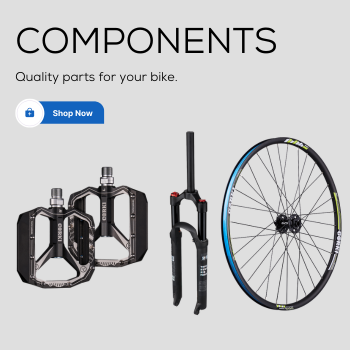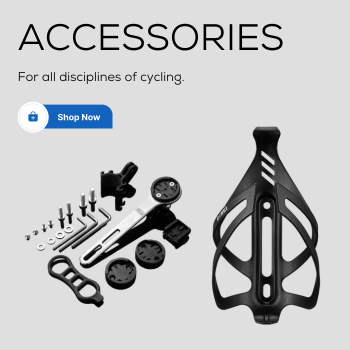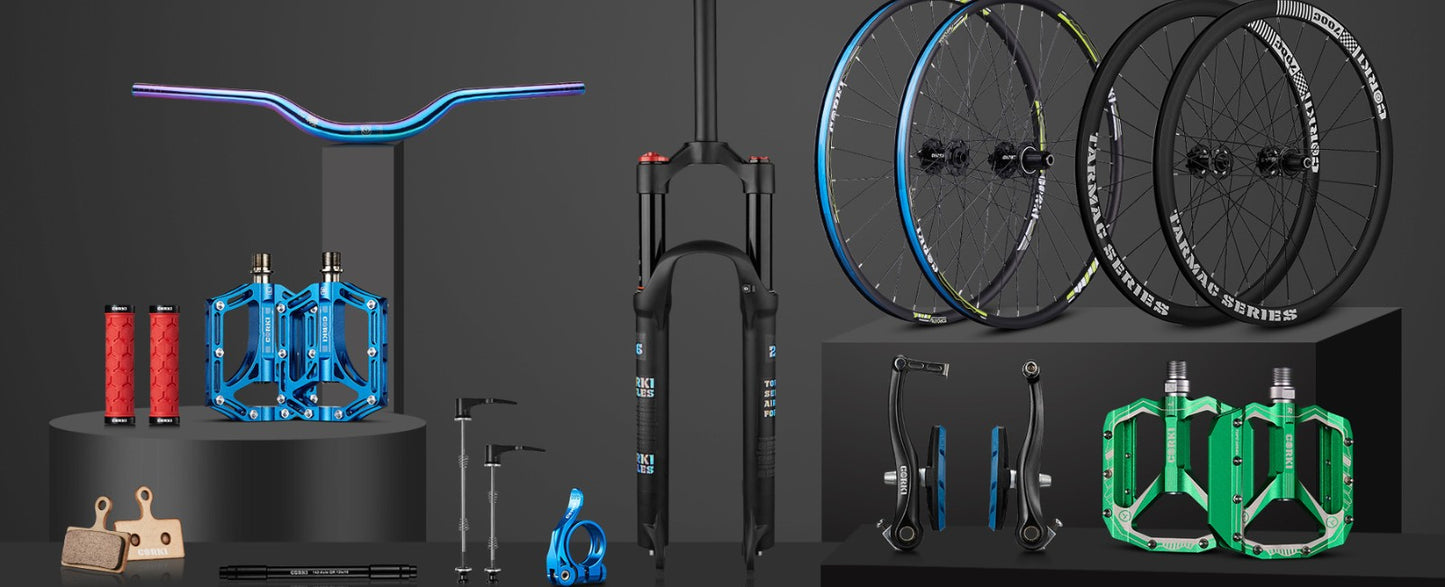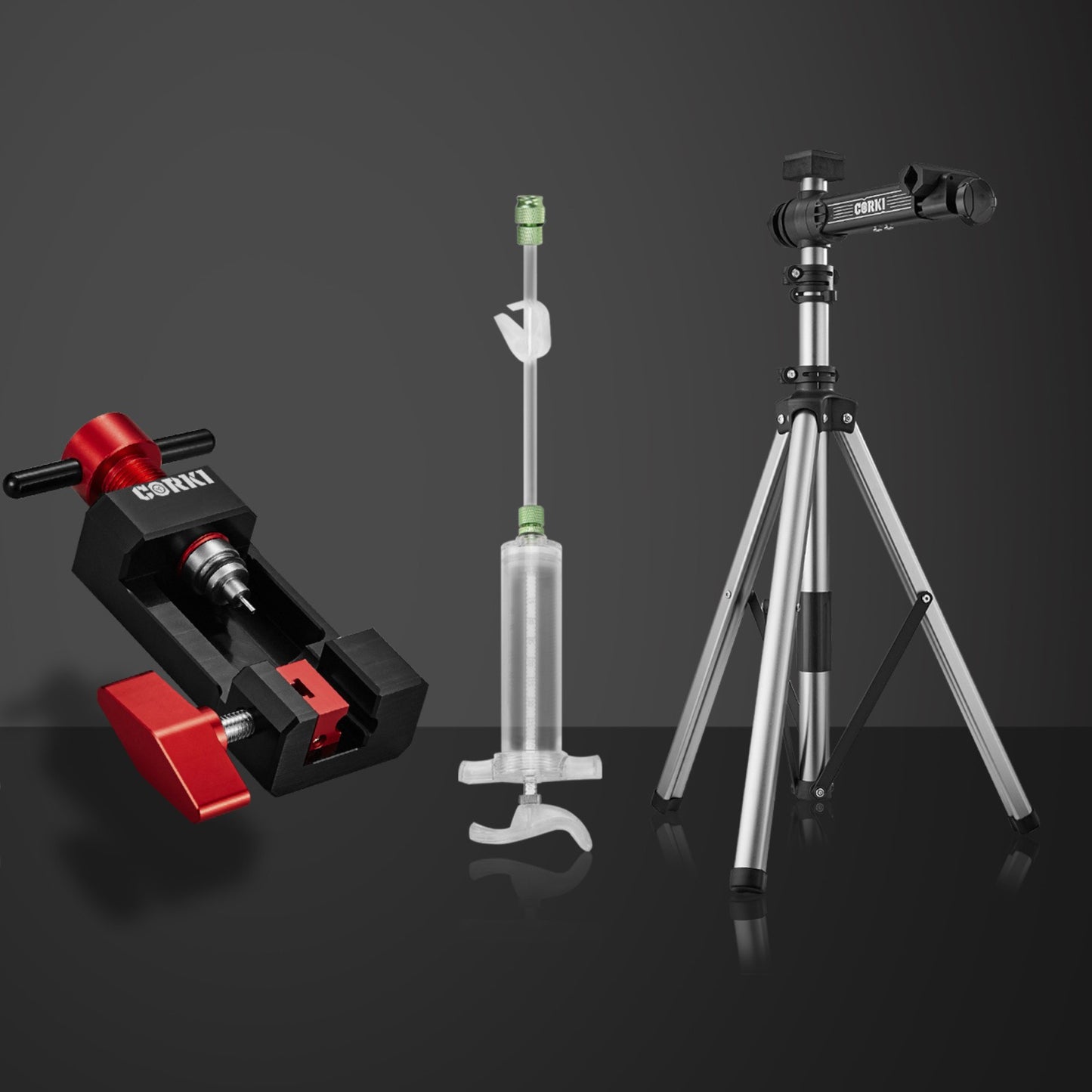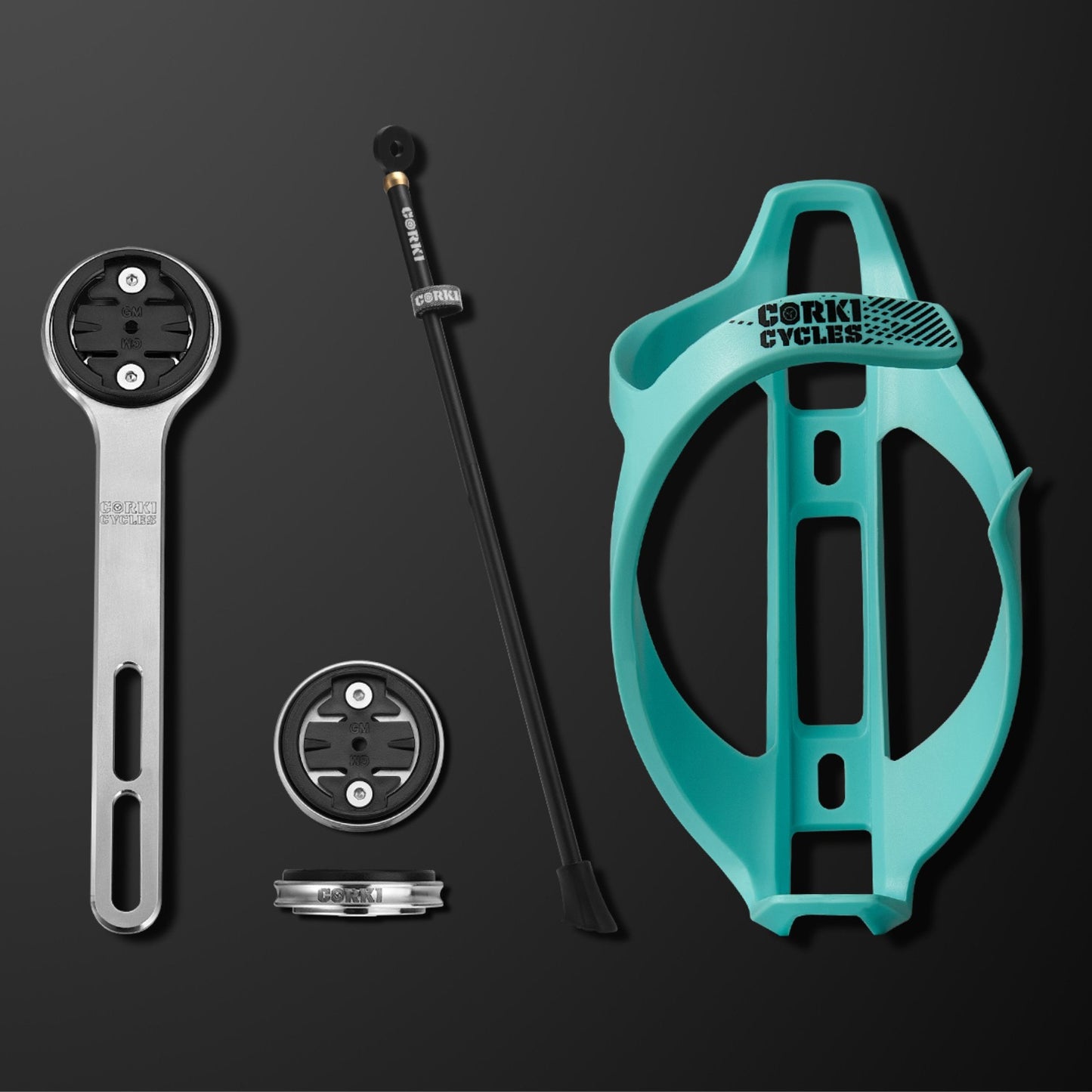Description
Disc Brake Pads & Rotor Alignment Tool
The alignment of your disc brake rotors and brake pads is very important. To have correctly aligned brake pads and disc rotors means greater riding performance. If your disc brake pads aren't aligned it causes rubbing. This reduces the disc brake pad's product life as well as the braking effectiveness. A simple rotor alignment tool ensures the perfect positioning of your brake pads and disc rotor in the brake caliper.
The Corki Cycles disc brake pad and rotor alignment tool are compatible with all disc rotors and brake pads. Use our alignment tool to position your brakes, so that on every ride you have superior braking power. No rubbing rotors or pads again.
To use the gap regulator tool simply place the alignment tool on your rotor. Above or below the caliper is perfect. Spin your wheel slowly till the alignment tool is positioned between your brake pads. Once in position, pull your brake. From here you can diagnose whether the new pads are too thick, the pistons need adjusting, or the rotor is slightly bent. After altering check again the rotor and pad positioning with the use of the alignment tool.
It is a common occurrence that your brake pads become misaligned. Any form of impact while riding can cause the pads to rub or the rotor to make that awful sound. By having a simple alignment tool you can adjust the positioning of your disc brake pads and rotor at home.
At Corki Cycles we believe in buying bicycle components, tools, and accessories that are strong and built for serious use. Nevertheless, as you push the limits of your riding, components and tools inevitably break or are affected by general wear and tear. With every disc brake alignment tool, you receive a 10-year limited warranty. We also offer a component and tool replacement scheme where we provide a discount on your new bicycle component. Send our friendly customer service a message for further information.
Check out Corki Cycle's full range of disc brake pads to replace and renew your braking power.
Specification
Features
FAQ's

